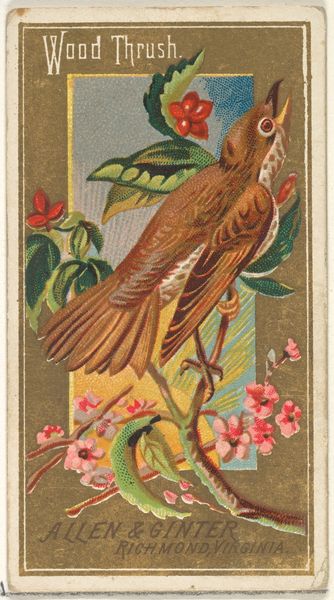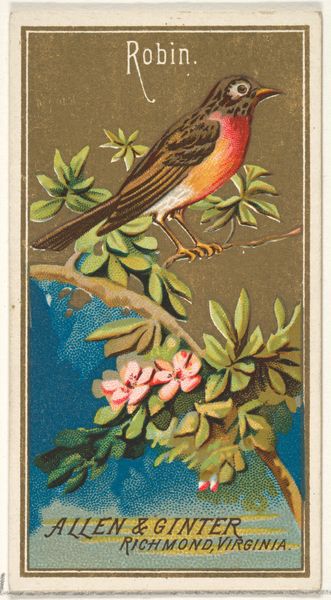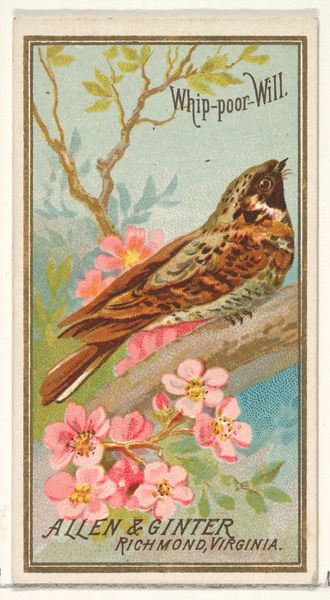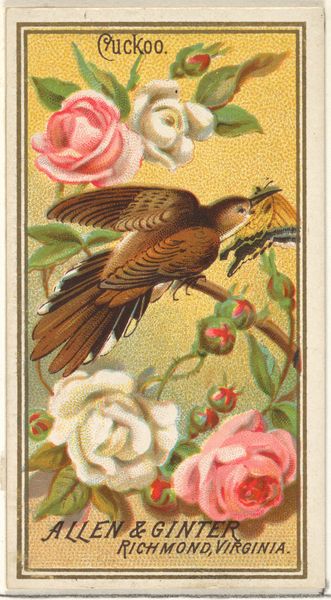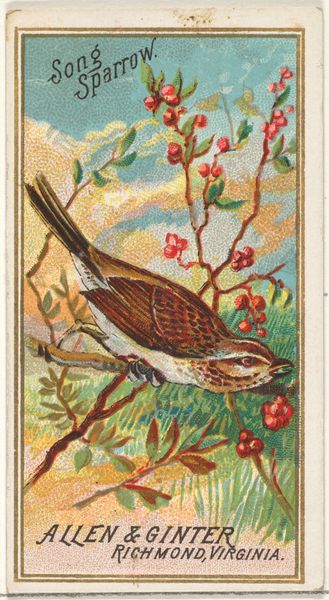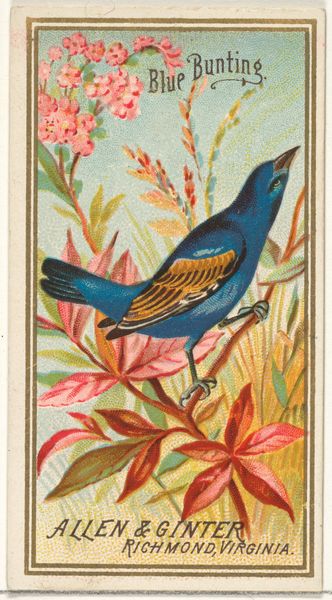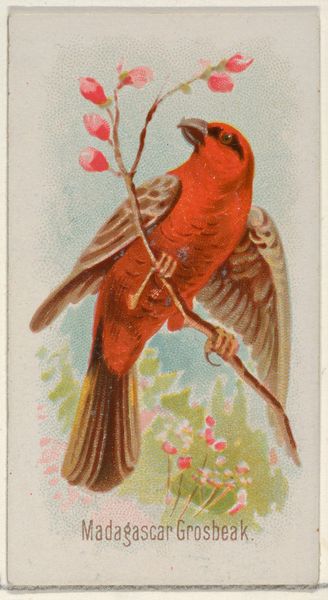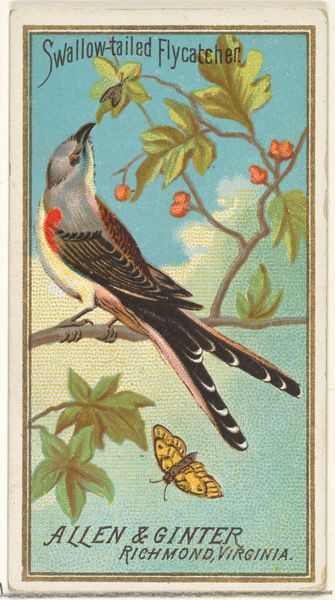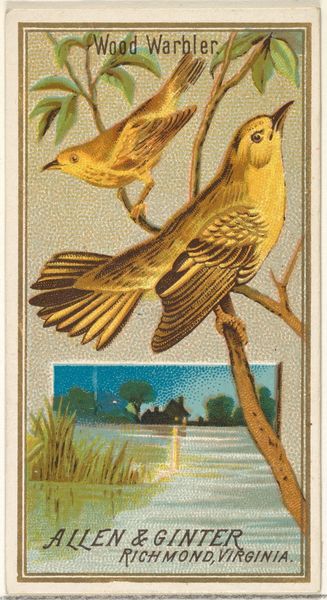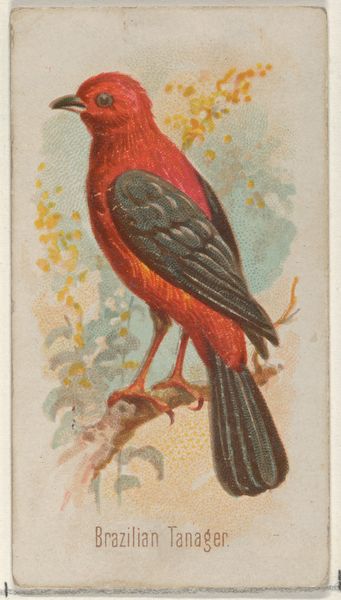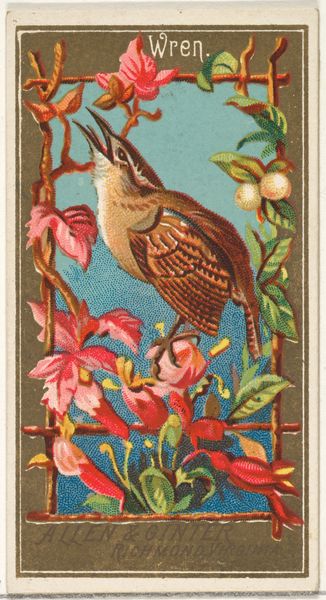
Cardinal Grosbeak, from the Birds of America series (N4) for Allen & Ginter Cigarettes Brands 1888
0:00
0:00
drawing, print, watercolor
#
drawing
# print
#
impressionism
#
bird
#
watercolor
#
art nouveau
#
watercolour illustration
Dimensions: Sheet: 2 3/4 x 1 1/2 in. (7 x 3.8 cm)
Copyright: Public Domain
Curator: Here we have an 1888 piece titled "Cardinal Grosbeak, from the Birds of America series (N4) for Allen & Ginter Cigarettes Brands," currently held at the Metropolitan Museum of Art. What's your initial read of it? Editor: Well, I’m immediately drawn to the vivid colors and the juxtaposition of the bird’s natural vibrancy against what appears to be a very stylized, almost patterned background. It's got an art nouveau sensibility, but with the distinct feel of commercial printing. Curator: Absolutely. These cards were inserts in cigarette packs. Allen & Ginter were pioneering this form of advertising, tapping into a growing consumer culture and interest in natural history. Editor: Which is fascinating when you consider the material reality: Tobacco consumption marketed with an image of a healthy, vibrant bird perched among flowers. The production of pleasure through something that actually harms the environment and human life... that is certainly something to reflect upon. What can we make of Allen & Ginter's Virginia roots here? Curator: Southern industry at the time relied heavily on both agriculture and free labor. The visual splendor and artistry served to distance the consumer from that brutal reality. These cards, aimed at a broad public, became instruments in shaping public perceptions and consumer behaviors in ways that masked underlying economic inequities. Editor: Exactly. And it's not just the exploitation of labor; it is exploitation of artistry for profit! Think about the labor involved in producing these images in large quantities. Were they paying decent wages for highly-skilled art? I highly doubt it, the watercolor and print details would be extremely tedious to recreate. Curator: Good point, while beautiful to view, there is little celebration of it within the institution. The very concept of high and low art are at play. It’s quite a statement, I find, that The Met now exhibits something originally intended as disposable advertising. It gives this particular piece new meaning within museum context. Editor: Well, I’m glad it survived to exist as part of a new discourse and conversation that challenges established value hierarchies.
Comments
No comments
Be the first to comment and join the conversation on the ultimate creative platform.

